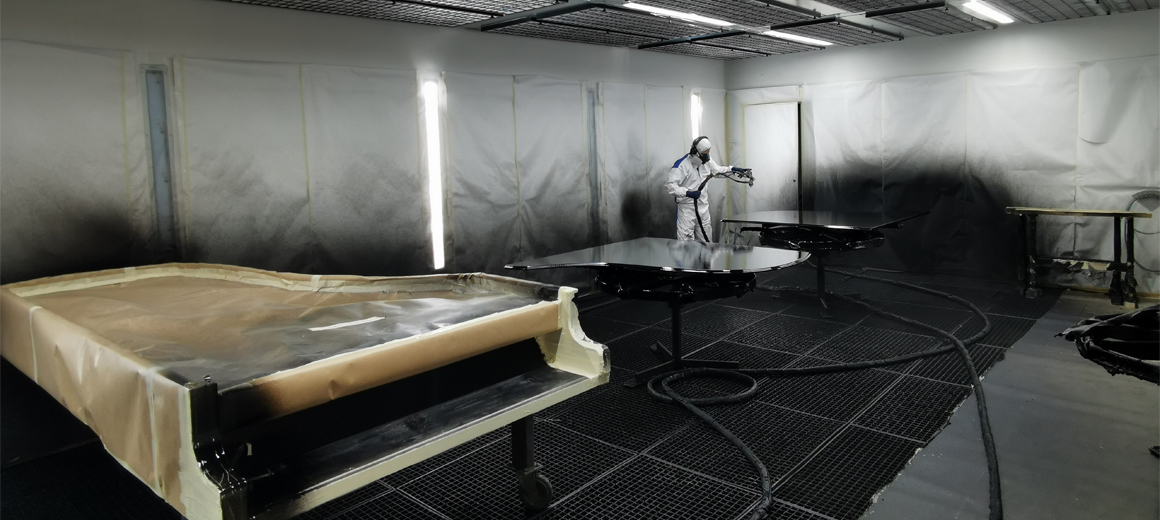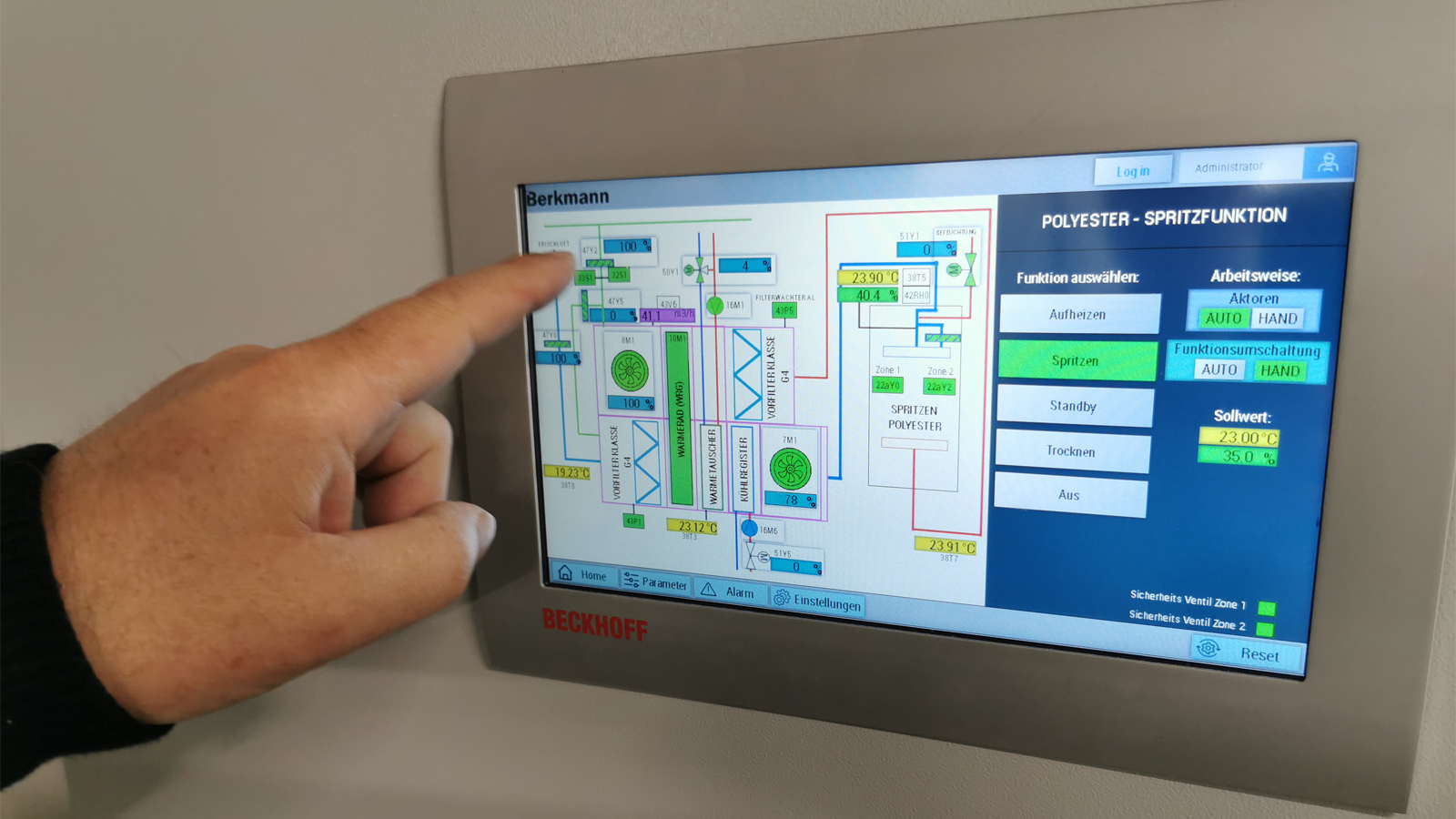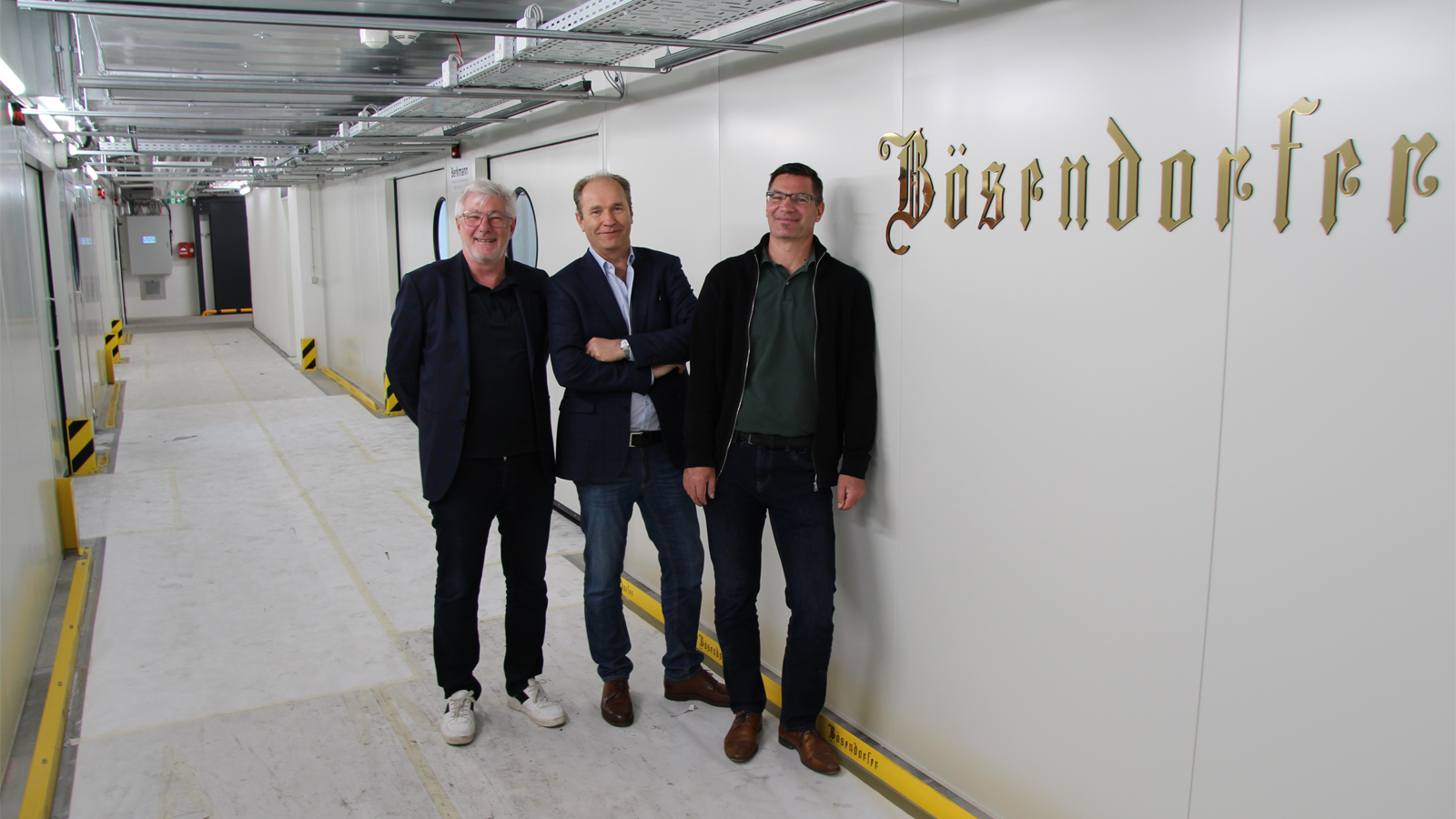

PC-based control for varnishing plant at Bösendorfer
The Austrian piano manufacturer Bösendorfer in Wiener Neustadt is one of the world’s oldest and most renowned piano manufacturers in the premium segment. With the aim of reducing the large amounts of energy required to varnish its grand pianos, Bösendorfer opted for a modern varnishing plant from Austrian manufacturer Berkmann. In addition to optimizing the process sequences and improving the quality of the varnished surface beyond its already high level, the new plant has reduced energy consumption by 75%. PC-based control from Beckhoff is responsible for the control and visualization systems, including the lighting.

Beckhoff control technology opens up more plant design freedom
The process logistics in the Berkmann varnishing facility are now operating on the basis of a new concept in which the equipment control center – which includes the ventilation units, filter system, heat recovery system, and heat generator – has been installed in a separate building from the factory hall. “Our workflows have been optimized as a result, and this has also had a positive effect on the surface quality of the varnish. We have significantly fewer rejects in production and the quality has been improved another notch due to less contamination,” says Thomas Broukal, technical and manufacturing director at the Bösendorfer piano factory. The foundation on which this new, modular plant concept has been built is PC-based and EtherCAT-based control technology from Beckhoff, which is able to cover large distances with ease.
Every technical system on a single PC – integrated software to cover every function
Controlling the temperature, speed, and volume of the supply air or exhaust air in the varnishing booth is no mean feat: Exceptional precision is required to create a high-quality coat of varnish, and the physical parameters need to be maintained at the same time. The central control system for the varnishing plant consists of the C6015 ultra-compact industrial PC, EtherCAT as the communication system, analog and digital EtherCAT Terminals, and a TwinCAT 3 PLC. The Beckhoff TwinCAT HMI visualization software is used on a CP690x economy built-in control panel.
Sustainable and energy-efficient
Significant energy savings have been achieved through intelligent temperature control using the TwinCAT Controller Toolbox, the use of well water for cooling, and heat recovery from the varnishing area’s exhaust air. Once the air has been preconditioned using these methods, all that remains is to bring it to the room temperature required for the varnishing process. “With heat recovery, we not only save 75% of the costs associated with heating, but we also reduce carbon emissions by 75%. We’re talking about 70,000 m³ of air per hour that needs to be heated – so that means savings amounting to several hundred kilowatt-hours of energy per hour,” explains Thomas Broukal.

Open, modular control technology enhances flexibility
Separating the equipment control center from the varnishing hall created a distance of 60 m between the control cabinets. Instead of complex thermocouple cables, the network was created using fiber optics with EtherCAT as the communication protocol. “Aside from some minimal adjustments in the software, this planning change only required the use of two Beckhoff modules in the controller: the CU1521 media converter and the EK1501 EtherCAT Coupler with multi-mode fiber optic,” states Ralph Schmoll, technical manager at Berkmann Lackieranlagen. “This flexibility is the great advantage of PC-based control technology, as it allows any number of additional functions to be added to the control system at any time.”
As the plant was being brought to life, the customer made repeated changes and additions in the areas of energy measurement and lighting, requiring the control concept to be adapted too. In total, two and a half times as many I/O terminals were installed in the final version of the control system than the initial plan had contained.
Advanced user-friendliness
The plant is operated and visualized via the CP690x control panel outside the varnishing booth. The visualization was implemented using Beckhoff’s web-based TwinCAT HMI operating software. This web technology makes it possible to access the plant’s operating functions from any PC via a simple web browser within the company. The varnish applicator can select from pre-installed functions, while the lighting throughout the floor can also be operated at the Beckhoff panel. Alarms and trend recording have also been integrated and can be used for purposes such as optimizing and performing maintenance on the varnishing plant. The operator can also intervene directly in the process, making it more efficient and bringing flexibility to the work that employees have to complete.